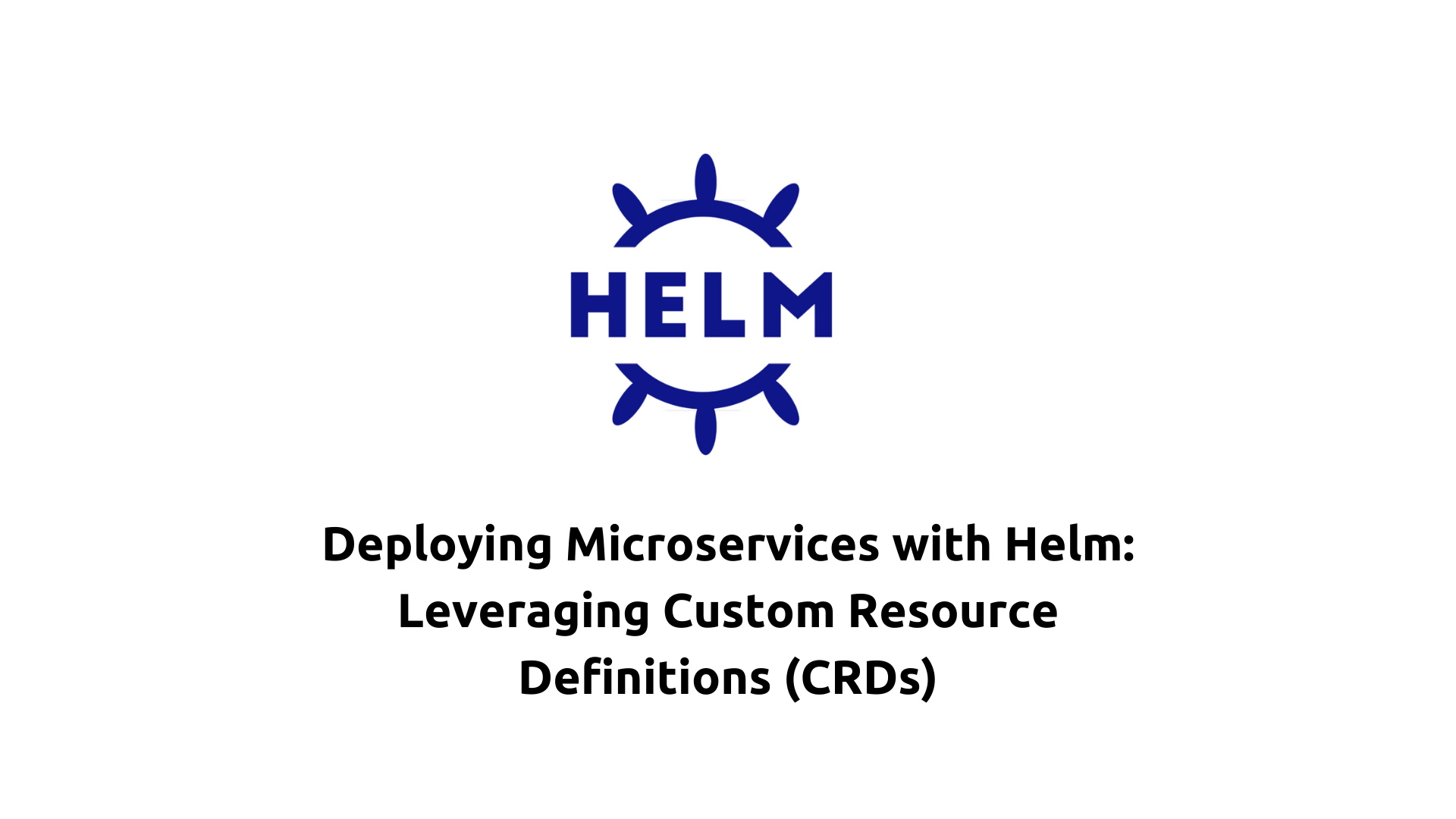Deploying Microservices with Helm: Leveraging Custom Resource Definitions (CRDs)
 Saurabh Adhau
Saurabh Adhau
Microservices architecture has become a popular approach for building scalable and maintainable applications. When deploying microservices on Kubernetes, Helm, a package manager for Kubernetes, offers a streamlined solution. In this article, we'll explore how Helm, along with Custom Resource Definitions (CRDs), can simplify the deployment of microservices.
Introduction to Helm and CRDs
Helm is a powerful tool for managing Kubernetes applications through the use of charts, which contain pre-configured Kubernetes resources. On the other hand, Custom Resource Definitions (CRDs) extend the Kubernetes API to enable the creation of custom resources tailored to specific application needs.
Structuring Helm Charts for Microservices
To deploy microservices using Helm and CRDs, we'll start by organizing our Helm chart:
my-microservices/
├── Chart.yaml
├── templates/
│ ├── user-service-crd.yaml
│ ├── product-service-crd.yaml
│ ├── user-service-deployment.yaml
│ ├── product-service-deployment.yaml
│ └── ...
├── values.yaml
└── ...
Custom Resource Definitions (CRDs)
CRDs define custom resources specific to our microservices. For example:
# user-service-crd.yaml
apiVersion: apiextensions.k8s.io/v1
kind: CustomResourceDefinition
metadata:
name: users.example.com
spec:
group: example.com
names:
kind: User
plural: users
singular: user
scope: Namespaced
versions:
- name: v1
served: true
storage: true
# product-service-crd.yaml
apiVersion: apiextensions.k8s.io/v1
kind: CustomResourceDefinition
metadata:
name: products.example.com
spec:
group: example.com
names:
kind: Product
plural: products
singular: product
scope: Namespaced
versions:
- name: v1
served: true
storage: true
Helm Templates for Microservices
We define Helm templates to deploy our microservices, referencing the CRDs:
# user-service-deployment.yaml
apiVersion: apps/v1
kind: Deployment
metadata:
name: user-service-deployment
spec:
replicas: {{ .Values.user.replicaCount }}
selector:
matchLabels:
app: user-service
template:
metadata:
labels:
app: user-service
spec:
containers:
- name: user-service
image: {{ .Values.user.image }}
ports:
- containerPort: 8080
# Add other configuration as needed
# product-service-deployment.yaml
apiVersion: apps/v1
kind: Deployment
metadata:
name: product-service-deployment
spec:
replicas: {{ .Values.product.replicaCount }}
selector:
matchLabels:
app: product-service
template:
metadata:
labels:
app: product-service
spec:
containers:
- name: product-service
image: {{ .Values.product.image }}
ports:
- containerPort: 8080
# Add other configuration as needed
Values Configuration
Configure values for the microservices in the values.yaml file:
user:
replicaCount: 3
image: "user-service:v1.0.0"
product:
replicaCount: 2
image: "product-service:v1.0.0"
Deployment
Deploy the Helm chart to Kubernetes:
helm install my-microservices ./my-microservices
Conclusion
In this article, we've demonstrated how Helm, combined with Custom Resource Definitions (CRDs), simplifies the deployment of microservices on Kubernetes. By organizing Helm charts to include CRDs and leveraging Helm's templating capabilities, users can effectively manage and deploy microservices architectures, paving the way for scalable and maintainable applications in Kubernetes environments.
Subscribe to my newsletter
Read articles from Saurabh Adhau directly inside your inbox. Subscribe to the newsletter, and don't miss out.
Written by

Saurabh Adhau
Saurabh Adhau
As a DevOps Engineer, I thrive in the cloud and command a vast arsenal of tools and technologies: ☁️ AWS and Azure Cloud: Where the sky is the limit, I ensure applications soar. 🔨 DevOps Toolbelt: Git, GitHub, GitLab – I master them all for smooth development workflows. 🧱 Infrastructure as Code: Terraform and Ansible sculpt infrastructure like a masterpiece. 🐳 Containerization: With Docker, I package applications for effortless deployment. 🚀 Orchestration: Kubernetes conducts my application symphonies. 🌐 Web Servers: Nginx and Apache, my trusted gatekeepers of the web.